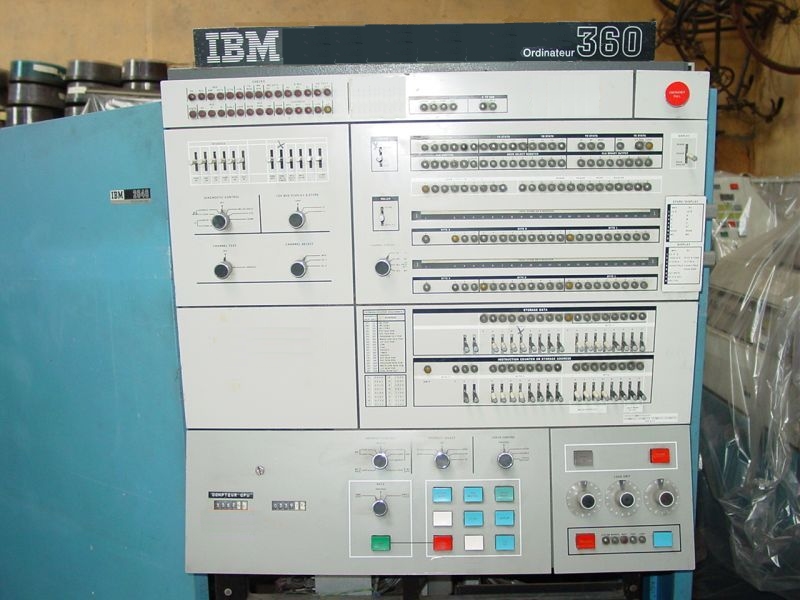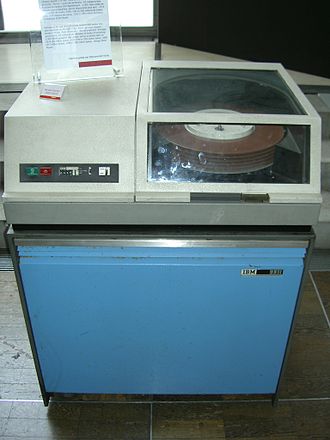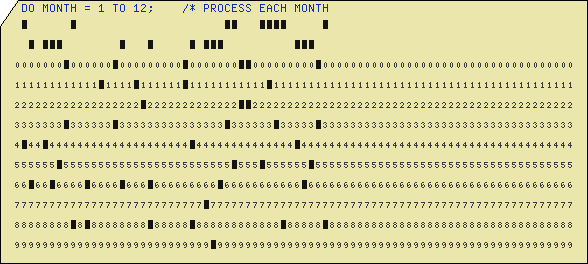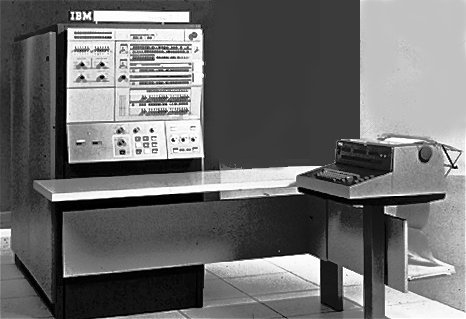From here:
The IBM mainframe is celebrating its 50th anniversary.
The first System 360 mainframe was unveiled on 7 April 1964 and its arrival marked a break with all general purpose computers that came before.
The machines made it possible to upgrade the processors but still keep using the same code and peripherals from earlier models.
I started working on a 360 model 40 two years after its introduction in 1966; I probably would have retired by now if someone hadn’t sued me but, alas, I toil on. What is extraordinary is that the z series mainframes that I now work on have essentially the same instruction set – admittedly with embellishments – as the antique 360. Writing a mainframe assembler program today isn’t too different from when I started in 1966.
The illustration above is a 360 model 40. The one I programmed had, as I recall, 8k of core memory (the early version of RAM: little magnetic rings threaded on wires). The operating system was 8k BOS, a non-multitasking OS which was not even able to spool print output. It was not much later that we upgraded to a luxuriant 16k of core and DOS which could not only spool print but had foreground and background jobs: a very primitive form of multi-tasking.
Here is a front panel of a 360/40. The big red knob disconnected power from everything; we never touched that. The lights showed actual bit values in core and the switches allowed us to dynamically change bits if things were not running as they should.
 The 2311disk drives we used held 7.25 megabytes; they were big boxes that shook when in use and, when broken, would occasionally leak hydraulic oil onto the floor. I miss those days.
The 2311disk drives we used held 7.25 megabytes; they were big boxes that shook when in use and, when broken, would occasionally leak hydraulic oil onto the floor. I miss those days.

Then there were the punched cards whose inconvenience was only slightly mitigated by the pool of girls operating the card punches.




Fascinating stuff. I originally undertook a degree in Network Engineering (back when networking was much more interesting that what it has evolved into), and had to learn some of these things. I eventually became a history teacher, but I do fondly think back to the clunky old technology I played around with in former years.
I’d love to read more of your reminiscences about some of this stuff. It’s before my time, but not that much before.
In what way was the necessity for punch cards mitigated by the presence of a pool of punch card girls, one wonders. (One of my age anyways)
I punched my own cards– Oh what tedious work for a 18 year student! Only thing I ever got done was a giant smiley face with several dots out of place. Seeing as I was in a technical college, we had no punch card girls, only nerdy engineering wanna-be’s, who mitigated nothing, (at least for me).
Seems like a million years ago, technologically, and in the passage of time.
And as far as retiring, you don’t want to do that, working keeps you out of trouble and the taverns.
Oh dear, this brings back memories! When Appleby brought computers into the school for faculty to use, we needed training in DOS. For me, the musician and dramatist, this new language was hopeless, and it brought out my humour- with – the – impossible! I love to use technology, but not understand it.
I used to have nightmares about punch cards!
Stelco ran its whole Field Force maintenance programme on punch cards. !700 tradesmen and support staff divided into trade groups -with unique coloured cards -assigned to every maintenance project in the plant -every shift -round the clock. Schedulers would set-up the punch cards for the next 24 hours on the afternoon shift and a special security run would take them up to Stelco Tower to be processed into readable job sheets for the next day. If the cards weren’t right, downtime on the mills was calculated in thousands of dollers a minute! No pressure at all.